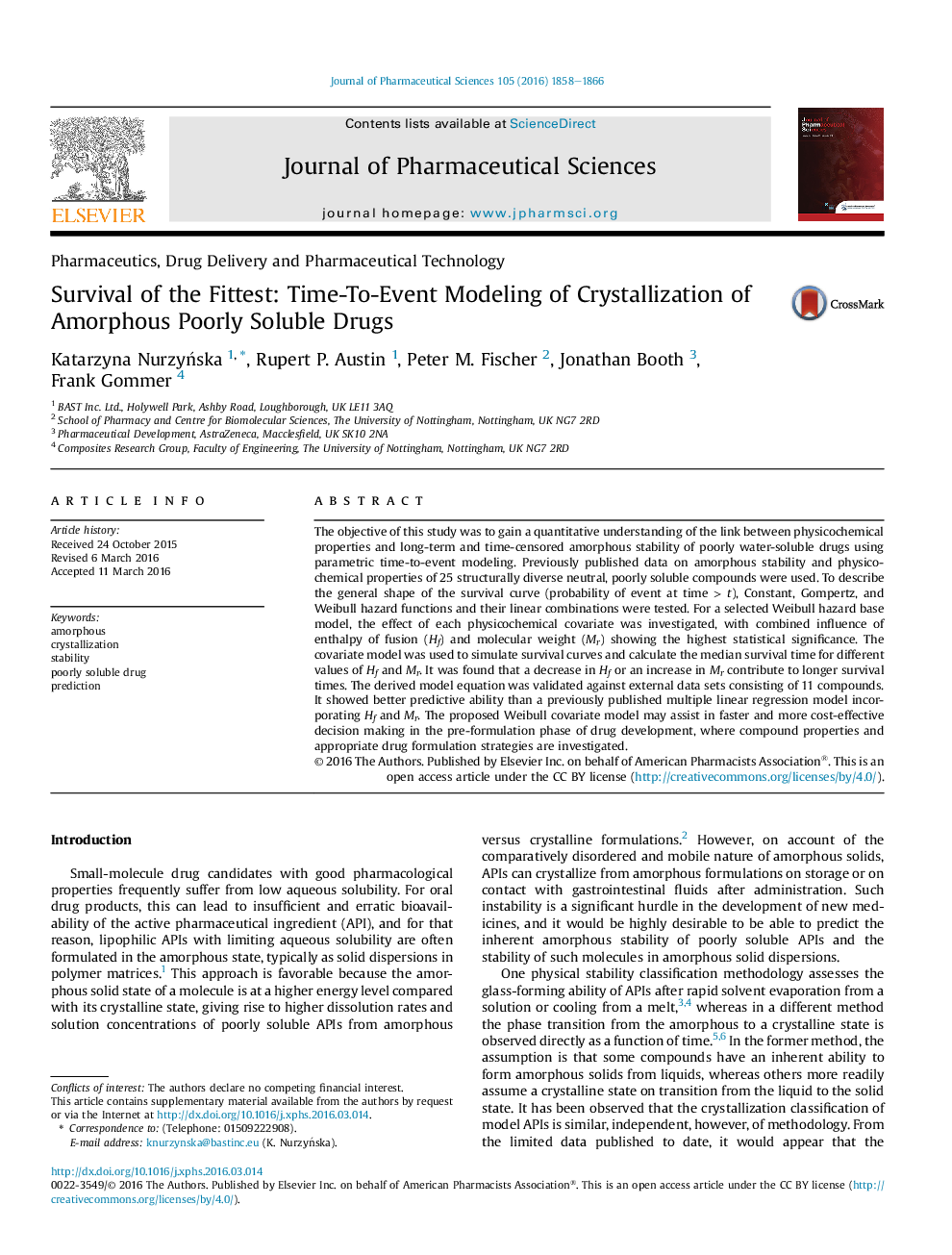| Article ID | Journal | Published Year | Pages | File Type |
|---|---|---|---|---|
| 10161902 | Journal of Pharmaceutical Sciences | 2016 | 9 Pages |
Abstract
The objective of this study was to gain a quantitative understanding of the link between physicochemical properties and long-term and time-censored amorphous stability of poorly water-soluble drugs using parametric time-to-event modeling. Previously published data on amorphous stability and physicochemical properties of 25 structurally diverse neutral, poorly soluble compounds were used. To describe the general shape of the survival curve (probability of event at time > t), Constant, Gompertz, and Weibull hazard functions and their linear combinations were tested. For a selected Weibull hazard base model, the effect of each physicochemical covariate was investigated, with combined influence of enthalpy of fusion (Hf) and molecular weight (Mr) showing the highest statistical significance. The covariate model was used to simulate survival curves and calculate the median survival time for different values of Hf and Mr. It was found that a decrease in Hf or an increase in Mr contribute to longer survival times. The derived model equation was validated against external data sets consisting of 11 compounds. It showed better predictive ability than a previously published multiple linear regression model incorporating Hf and Mr. The proposed Weibull covariate model may assist in faster and more cost-effective decision making in the pre-formulation phase of drug development, where compound properties and appropriate drug formulation strategies are investigated.
Related Topics
Health Sciences
Pharmacology, Toxicology and Pharmaceutical Science
Drug Discovery
Authors
Katarzyna NurzyÅska, Rupert P. Austin, Peter M. Fischer, Jonathan Booth, Frank Gommer,
